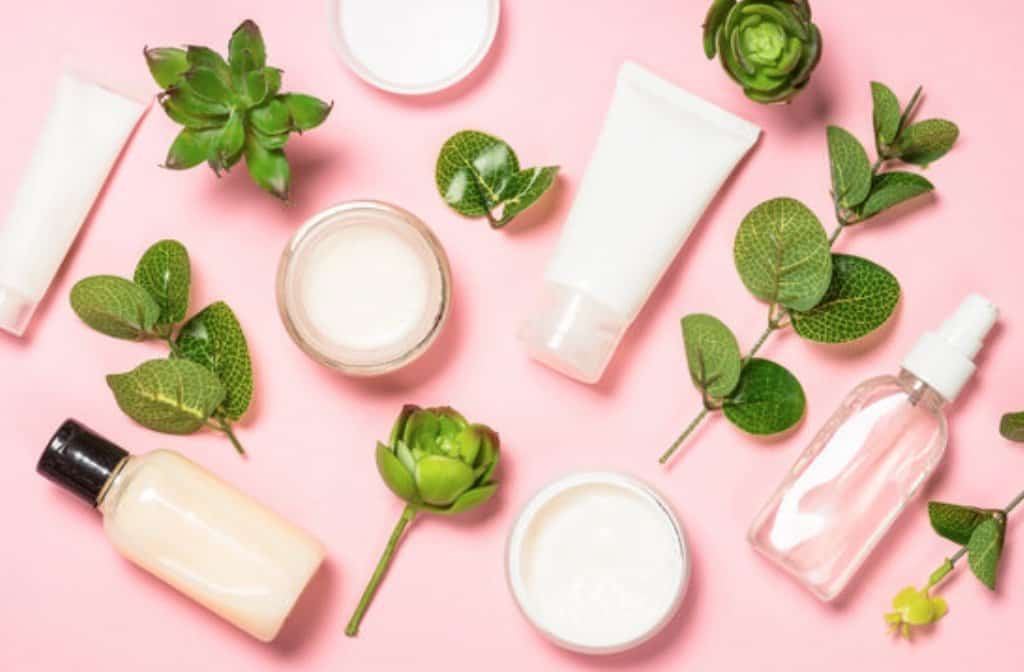Many of our beauty and personal care products are full of good, skin-nourishing ingredients. Unfortunately, many of these products are also full of harmful ingredients. Here are seven common ingredients found in beauty products that can be potentially harmful.
Chapter Overview
#1: Parabens
Parabens are a group of chemicals that are used as preservatives in beauty products to keep bacteria from growing. While they are serving a good purpose in our products, they are actually harmful. Parabens mimic estrogen, causing an abnormal function of the reproductive system (in both females and males), which can then result in fertility problems and birth defects. Common types of parabens found in beauty products are methylparaben, propylparaben, and isobutylparaben.
There are other, natural types of preservatives to prevent bacterial growth in beauty products. Unfortunately, some of these natural products are more expensive, but they don’t have to be and they aren’t always more expensive than their non-natural counterparts.
#2: Phthalates/Fragrance
If you look at the ingredients list of many shampoos, conditioners, facial washes, and moisturizers, you’ll find that they contain fragrance. Fragrances are nice because they make our beauty products smell good, but many of these synthetic fragrances include a chemical called phthalate. Phthalates are known to be carcinogenic and endocrine disruptors, meaning that they can cause thyroid irregularities and hormonal changes. Common phthalates are hidden under the names “DBP”, “DEP”, “DMP”, and “DEHP”. While it may be hard to switch to all fragrance-free beauty products, you can look for companies that use natural fragrances (essential oils) instead of synthetic fragrances.
#3: Formaldehyde
Formaldehyde is most often used in furniture finishes, but it can also be found in beauty products. Your ingredients list may not outright list “formaldehyde” as an ingredient, but it can be disguised as other ingredients that are formaldehyde releasers. DMDM hydantoin and Diazolidinyl urea are two of the most commonly used formaldehyde-releasing ingredients because they also act as preservatives. They are generally safe in very low concentrations (make sure these ingredients are closer to the end of the entire ingredient list).
#4: BHTs
BHT (butylated hydroxytoluene) is used in beauty products to extend its shelf life, but can also cause hormonal imbalances. It is also used in food as a preservative, specifically breakfast cereals. All of Europe, Australia, New Zealand, Canada, and Japan have banned the use of BHT as a preservative in their food products.
#5: Propylene Glycol
This ingredient is used in packaged food as well as cosmetic products because it’s good for absorbing water and moisture. The only downside to this ingredient is that it can cause skin irritations in some people, but others are wary of it because it is also used in antifreeze. However, research has only ever shown that it is just a skin irritant, especially in people with eczema and other skin conditions. If you have sensitive skin, then you may want to steer clear of products containing propylene glycol, methyl ethyl glycol, trimethyl glycol, 1,2 propanediol, and 1, 2 dihydroxypropane.
#6: Aluminum/Mineral Oil
Aluminum is mostly used in deodorants, mainly antiperspirant deodorants. Aluminum has been known to affect the central nervous system, and it also prevents the body from eliminating toxins. In the same way, mineral oil (found in foundations and creams) clogs the skin’s pores, causing acne and other issues.
#7: Talc
Talc is mostly used in baby powders and personal care powders (talcum), and has been known to cause ovarian cancer in women, and even lung disease (when inhaled) in both men and women due to it having traces of asbestos. There have even been lawsuits against companies selling products containing talc because of all of the health issues it causes.
Conclusion
In the United States, the FDA approves of many of these ingredients in small amounts. However, as time goes on, some of these ingredients can prove to be harmful (i.e., talc). Always read and research the ingredients in your beauty products when you’re not sure of what is harmful and what isn’t.

